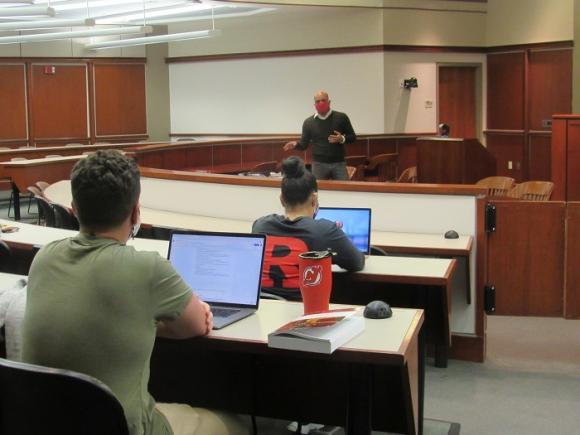Exactly How to Create Engaging Test Presentations That Gain Juries and Judges
Crafting compelling test discussions that mesmerize judges and courts is a nuanced art that needs a calculated method. From the cautious consideration of the target market's assumptions to the seamless assimilation of storytelling techniques, each component plays a critical function fit the result of a legal case - Trial Presentations. By using innovative aesthetic devices, integrating interactive aspects, and devoting time to rigorous practice and rehearsal, lawyers can substantially boost the influence of their court discussions. The ability to involve and convince through well-crafted presentations is a skill that can make all the difference in swaying a jury or judge, ultimately tipping the scales of justice in one's favor.
Recognizing Your Target Market
To efficiently engage your audience throughout trial presentations, it is crucial to recognize their choices, expectations, and degree of experience in the topic. By tailoring your discussion to meet the certain demands of the target market, you can improve their understanding and retention of the info provided.
Begin by researching the demographics of the audience, such as age, education and learning degree, and profession. This information can help you evaluate their knowledge with legal treatments and readjust your presentation design accordingly. A jury may call for less complex language and even more aesthetic aids compared to a team of lawful professionals.
In addition, think about the psychological and emotional aspects of your target market. Are they thoughtful in the direction of specific disagreements or more likely in the direction of facts and evidence? Understanding these nuances can help you mount your discussion in a means that reverberates with the target market on a much deeper degree.
Storytelling Strategies
Understanding your audience's choices and expectations can considerably influence the efficiency of your trial discussions, particularly when implementing storytelling methods to encourage and captivate. Storytelling is an effective device that can aid attorneys attach with discretionary on an extra psychological level, making complicated lawful arguments a lot more relatable and memorable.

Including dazzling details, personal anecdotes, and rhetorical devices can additionally boost the storytelling experience, maintaining the target market engaged and spent in the result of the situation. By crafting a convincing story that resonates with the values and emotions of the court and judges, legal representatives can increase the chances of winning their disagreements and achieving positive verdicts.
Visual Discussion Devices
Making use of visual discussion tools can considerably improve the impact and performance of test discussions by giving an aesthetically engaging means to convey intricate info to judges and courts. Aesthetic aids such as graphes, graphs, computer animations, and diagrams can aid streamline intricate information, making them much more obtainable and reasonable to the audience. By incorporating visual components right into trial presentations, attorneys can develop an engaging narrative that reverberates with jurors and leaves a long lasting perception.

Integrating Interactive Components
Integrating interactive aspects into trial discussions can enhance audience interaction and understanding, cultivating an extra immersive and interactive court experience. By incorporating components such as interactive timelines, 3D animations, clickable exhibits, and virtual fact repairs, attorneys can captivate courts and jurors, making intricate details extra accessible and unforgettable.
Interactive timelines permit a vibrant screen of sequential occasions, helping the target market understand the sequence of vital occurrences in an instance. 3D computer animations can bring criminal activity scenes or mishap repairs to life, offering a comprehensive graph that assists in clearing up complex details. Clickable displays make it possible for customers to communicate with proof, records, or pictures, enabling a hands-on expedition of essential details.
Furthermore, digital truth repairs can deliver the target market into the heart of the action, offering an engaging viewpoint that traditional presentations might lack. These interactive aspects not only involve Our site the customers however likewise encourage them to actively join the trial procedures, bring about an extra convincing and impactful courtroom presentation.
Technique and Rehearsal
To properly take advantage of the potential of interactive aspects in test discussions, thorough technique and wedding rehearsal are necessary to make certain seamless assimilation and delivery in the court room setup. Practice and practice session assistance Go Here test speakers come to be knowledgeable about the web content, timing, and circulation of their presentations, permitting them to confidently browse through various aspects such as video clips, animations, or interactive graphics. By practicing their distribution, presenters can fine-tune their talking skills, body language, and general discussion design to boost persuasion and integrity before the court and court.
Throughout practice, speakers can determine any kind of technical issues that may arise with interactive components, guaranteeing that every little thing runs smoothly during the real test. Additionally, practicing before a mock audience or associates can offer valuable feedback on the performance of the interactive elements and the overall presentation. This feedback enables presenters to make necessary changes and renovations before tipping into the courtroom, ultimately increasing the influence and success of their trial presentations.
Verdict
To conclude, developing interesting trial presentations that mesmerize juries and courts needs a deep understanding of the target market, efficient narration techniques, visual devices, interactive elements, and detailed method (Trial Presentations). By executing these approaches, lawyers can properly communicate their disagreements and proof in an engaging fashion that resonates with the decision-makers in the courtroom
Using aesthetic discussion devices can considerably enhance the impact and efficiency of test discussions by giving a visually engaging means to convey complex information to our website juries and courts. By incorporating visual aspects into test discussions, lawyers can produce a compelling narrative that reverberates with jurors and leaves a long-term impression.
One prominent aesthetic discussion tool is the usage of multimedia discussions, which permit for the assimilation of videos, pictures, and audio recordings to supplement spoken disagreements. Trial Presentations.To properly utilize the potential of interactive elements in test presentations, detailed practice and rehearsal are essential to guarantee smooth assimilation and distribution in the courtroom setup. Method and practice session aid test presenters become acquainted with the content, timing, and circulation of their presentations, enabling them to confidently navigate through various components such as video clips, computer animations, or interactive graphics